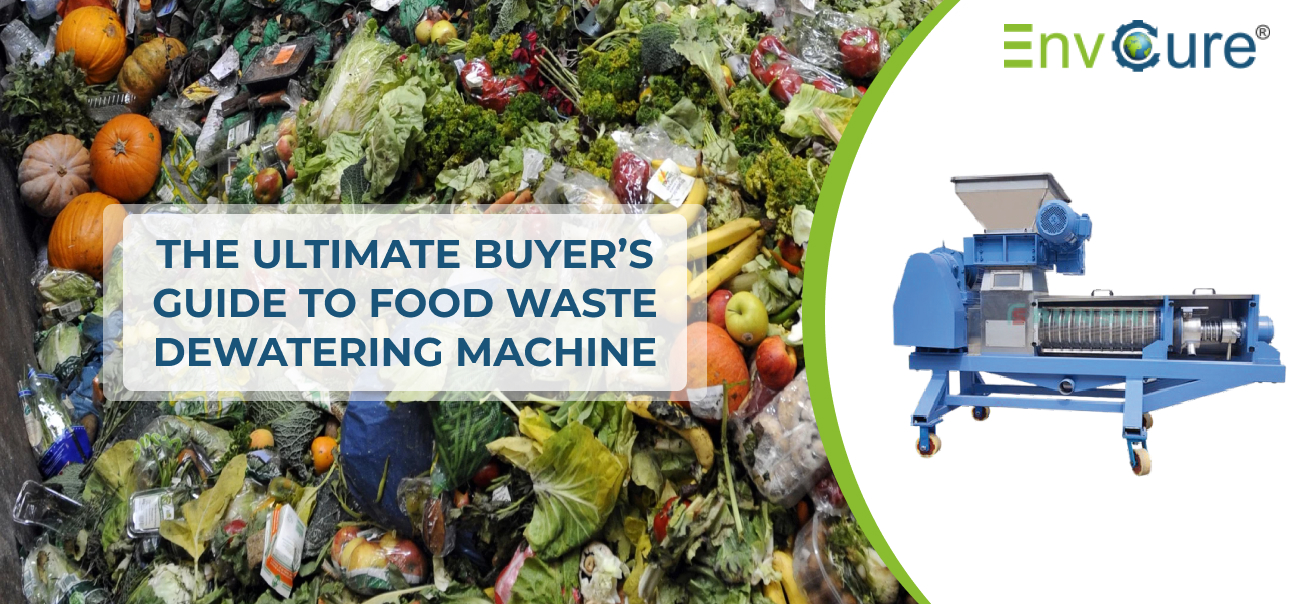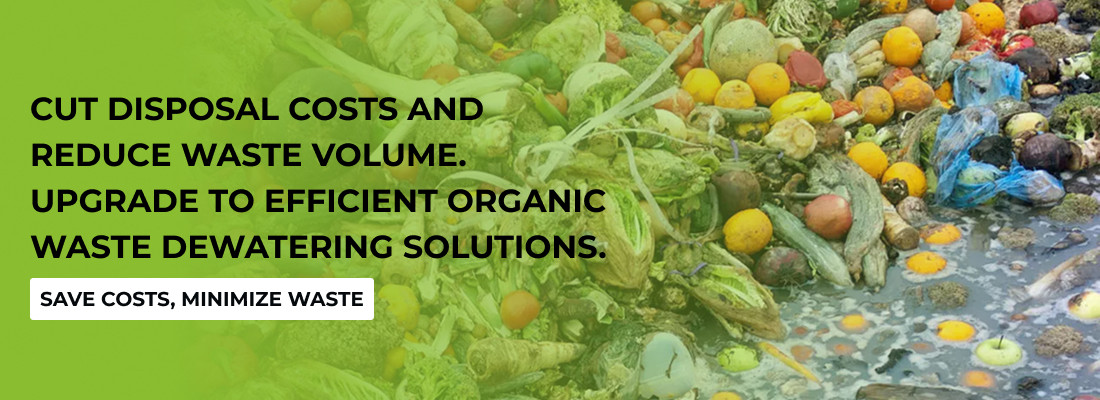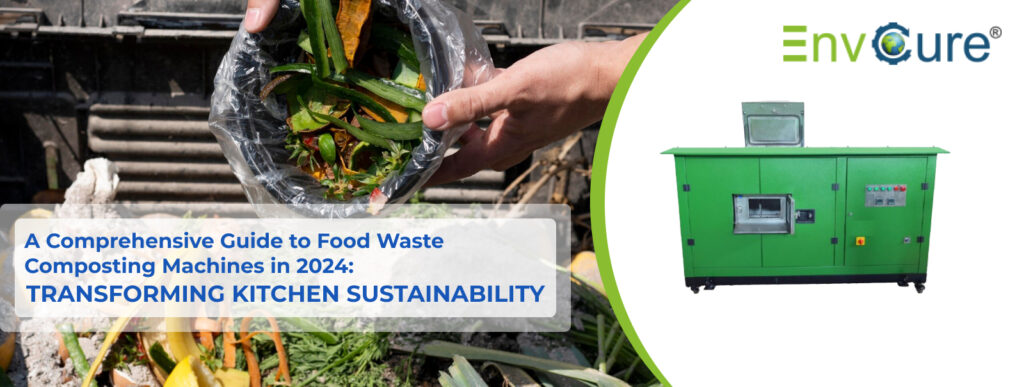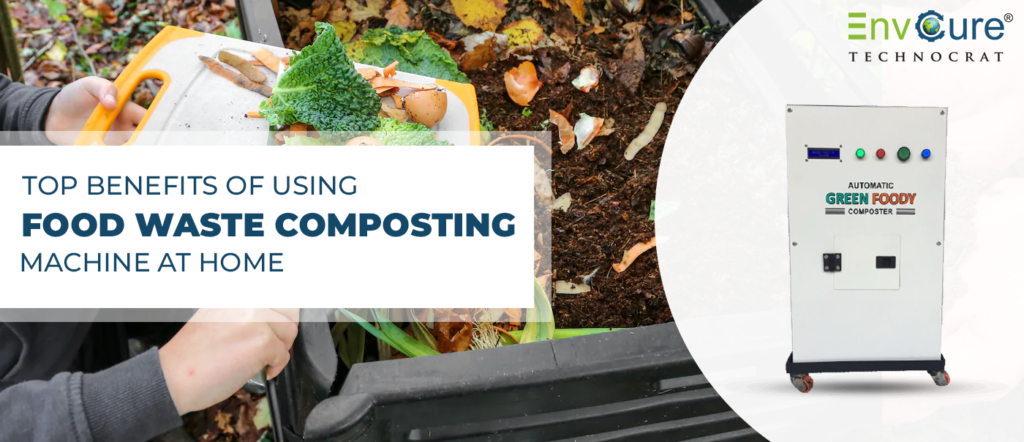Food waste becomes a challenge when every day, kitchens, food processing plants, and municipal facilities handle huge amounts of food scraps such as vegetable peels, spoiled dairy, or meat trimmings that pile up, stink, and cost a fortune to dump away. A food waste dewatering machine squeezes out excess water so you get compact, manageable solids for composting, biogas production or disposal. This guide explains Food Waste Dewatering, the different types available, their benefits and how to buy one. Find solutions with EnvCure Technocrat LLP that save money, streamline operations and meet environmental standards.
Overview: Food Waste Dewatering
- Food Waste Dewatering removes moisture from organic waste to reduce volume , weight for easy handling and processing.
- Machine types include screw presses, centrifugal dewaterers, belt presses and vacuum systems for specific operational scales.
- The advantages are low cost disposal, low environmental impact from reduced landfill use and high resource recovery for composting or biogas.
- Best selection depends on capacity, material durability, energy efficiency and maintenance needs of buyers.
- Food waste dewatering machines designed for sustainable operations are offered by EnvCure TechnoCRAT LLP.
What Is Food Waste Dewatering?
Food waste dewatering consists in the separation, by mechanical ways, of liquids from organic solids (vegetable scraps, meat residues, dairy byproducts, etc.). High moisture content upto 70-80% in food waste causes rapid spoilage, odors and high disposal costs. Dewatering lowers that moisture to 20-40%, producing compact solids for processing.
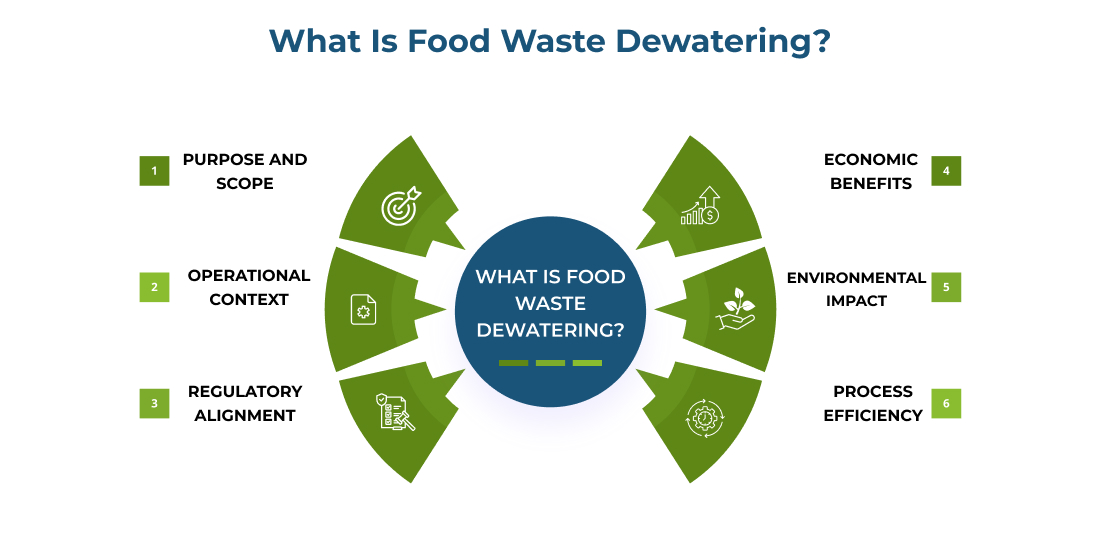
- Purpose and Scope: Prepares waste for composting, anaerobic digestion or disposal with minimum volume and weight.
- Operational Context: Used in restaurants, food processing plants and municipal facilities for waste handling automation.
- Regulatory Alignment: Supports waste reduction mandates like those from the EPA that target landfill diversion.
- Economic Benefits: Lowers transport costs because waste fees are often weight based.
- Environmental Impact: Methane emissions from decomposing wet waste reduce in landfills.
- Process Efficiency: Odor control & pest attraction reduces odors for hygiene.
How Food Waste Dewatering Machines Operate
These machines force water out of food wastes to make soggy materials manageable solids. It involves feeding waste in either a pressure or centrifugal motion system that separates liquids from solids for separate handling.
- Input Mechanism: Waste enters from an open hopper often pre-shredded by an industrial shredder.
- Separation Technology: Compresses (e.g. screw presses) or rotates (e.g. centrifugal systems to expel liquids from filters or screens.
- Output Management: All solids are discharged for collection, and all liquids are treated or reused.
- Automation Features: Includes moisture sensors which alter operations as necessary.
- Safety Protocols: Protective guards, emergency stops and enclosed chambers for operators.
- Energy Considerations: Low-power motors balance performance with cost in modern designs.
Type of Food Waste Dewatering Machine
At present, we specialize exclusively in Screw Press Deaterers, which are highly efficient for handling various types of organic and food waste. Unlike other dewatering technologies used across different scales of operation, our focus remains on screw press systems due to their superior performance and versatility for diverse waste compositions.
- Screw Press Dewaterers: Compresses waste with helical screw; ideal for processing pulpy, fibrous, and high-volume organic materials such as fruit residues, vegetable waste, and food slurry.
Benefits of Organic Waste Dewatering
Organic waste dewatering brings considerable operation & environmental benefits. It reduces moisture, so waste management becomes more economic and more ecological.
- Volume Reduction: Reduces waste mass by 70%, reducing storage and transport requirements.
- Cost Efficiency: Hastening costs are reduced because hauling weight is related to disposal fees; Especially in light of rising landfill costs.
- Environmental Gains: Decreases landfill methane emissions, the main cause of global warming.
- Resource Recovery: Focused organic solids improves composting and biogas production.
- Improved Hygiene: Odors and pests are reduced and work environments are kept clean.
- Regulatory Compliance: Supports waste diversion policies and municipal/corporate sustainability goals.
- Operational Streamlining: Downstream processes like sorting or digestion become simpler.
Key Considerations for Purchasing a Food Waste Dewatering Machine
The selection of the right food waste desalinating machine depends on the operation requirements and machine specifications. Key factors set your facility goals.
- Processing Capacity: Optimal performance is 50-1,000 kg/hour throughput divided by daily waste output.
- Material Quality: For acidic food waste, choose stainless steel construction.
- Energy Efficiency: Give preference to low-wattage motors for lowest overall-cost operation.
- Maintenance Requirements: Select models with accessible parts for cleaning and repairs to minimize downtime.
- Safety Standards: Automatic shut-offs, enclosed systems for operator protection are some of the features.
- Budget Planning: Weigh initial costs against long-term savings due to lower disposal fees.
- Vendor Support: Pick providers with solid warranties and quick technical help.
Integrating Dewatering with Waste Management Systems
Ideally a food waste dewatering machine fits into an overall waste management concept. It fits together with other waste management equipment.
- Pre-Processing Synergy: Waste shredder machine or twin shaft shredder machine for municipal waste – break down materials before dewatering.
- Shredding Compatibility: Add a twin shaft shredder for plastic recycling to separate the non-organic streams.
- Capacity Optimization: Evaluate twin shaft shredder capacities and rotor / shaft speed / rpm to suit dewatering requirements.
- Specialized Equipment: For complete waste handling add an e-waste shredder or system for tire shredding or rubber waste shredding.
- Systematic Workflow: Connect dewatering with composting/anaerobic digest units for resource recovery.
Maintenance Strategies for Optimal Performance
Proper maintenance keeps a food waste dehydrating machine working for many years. Consistent care prevents breakdowns & maintains efficiency.
- Daily Cleaning Protocols: Screens and chambers should be rinsed to remove organic residues to prevent clogs & corrosion.
- Regular Inspections: Check screws, belts and motors for wear or damage weekly.
- Lubrication Schedules: Apply manufacturer specified lubricants to moving parts to decrease friction.
- Empty Operation Cycles: Run machine briefly without waste after use to remove residual materials.
- Operator Training: Train staff on correct usage to prevent overloading or improper handling.
- Annual Servicing: Proactively check for problems with professional technicians.
- Documentation: Log maintenance activities to predict performance & repairs.
Choosing the Right Machine: A Step-by-Step Approach
Food waste dewatering machine selection is a process tied to operation goals. Watch these steps to make a sound decision.
- Assess Waste Volume: Find required capacity by calculating waste output daily or weekly.
- Analyze Waste Composition: Identify food waste types (e.g., pulpy, fibrous) with respect to machine type.
- Evaluate Space Constraints: Make sure the machine fits in your facility’s layout and operation flow.
- Compare Energy Usage: Review power consumption specs, trade efficiency for cost.
- Check Compatibility: Confirm integration with existing equipment – for example an industrial shredder.
- Request Demonstrations: Verify machines against test machines or review performance data from suppliers.
- Secure Financing: Check out buy/lease options that meet your budget constraints.
EnvCure: Your Partner in Sustainable Waste Solutions
We at EnvCure Technocrat LLP believe Food waste Dewatering is an important tool for Waste management. This guide reviewed the mechanics, types, benefits, purchasing considerations, integration strategies, & maintenance of food waste dewatering machines. You’re armed with insights to select equipment which cuts costs, boosts sustainability and streamlines operations. Ready to transform your waste management? The food waste dewatering machines are durable & efficient. For tailored solutions all our team. Join us to build a sustainable future.
FAQs Related to Food Waste Dewatering
Q: What is a food waste dewatering machine?
A: A food waste dewatering machine separates liquids from solid food waste, reducing volume and weight by removing free and bound moisture to produce a drier, easier-to-handle solid fraction and a liquid effluent.
Q: What types of food waste can it process?
A: They handle kitchen scraps, fruit & vegetable peels, meat trimmings, dairy residues, and restaurant or catering waste. Some heavy-duty models can also process bones or large fibrous material after pre-shredding.
Q: What are the main benefits of dewatering food waste?
A: Reduced landfill costs, lower transport volumes, easier composting/anaerobic digestion feedstock, less odor, reduced leachate, and improved workplace hygiene.
Q: What power and utilities are required?
A: Requirements depend on the model: small units may run on single-phase electricity, larger industrial machines need 3-phase power. Some systems need water for washing and compressed air for controls. Always check the spec sheet.




